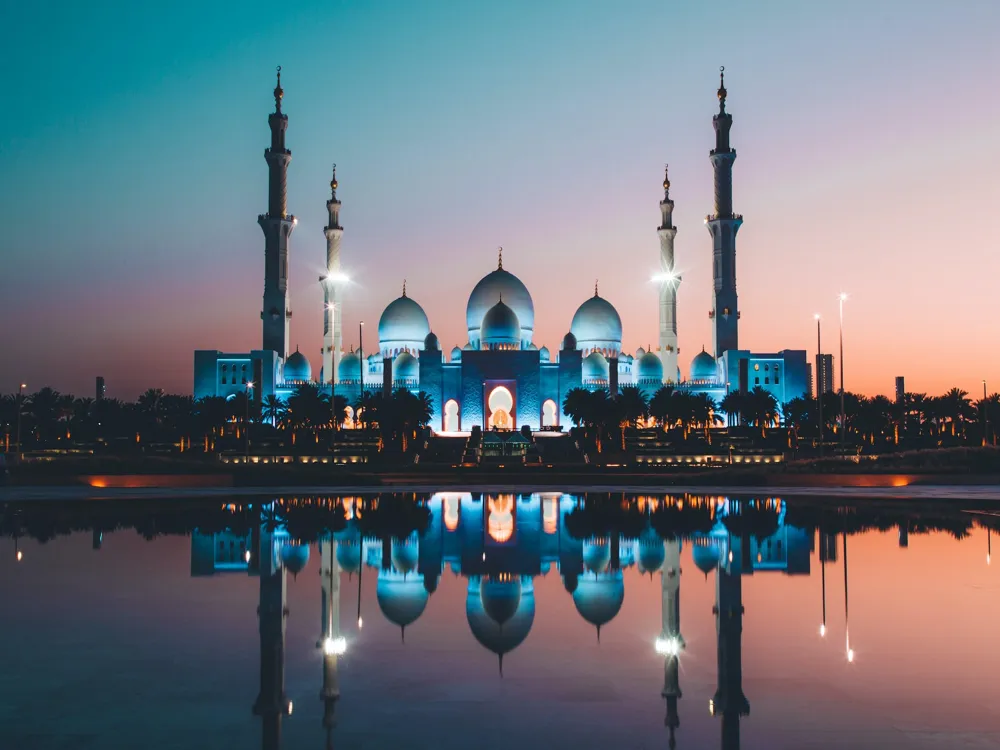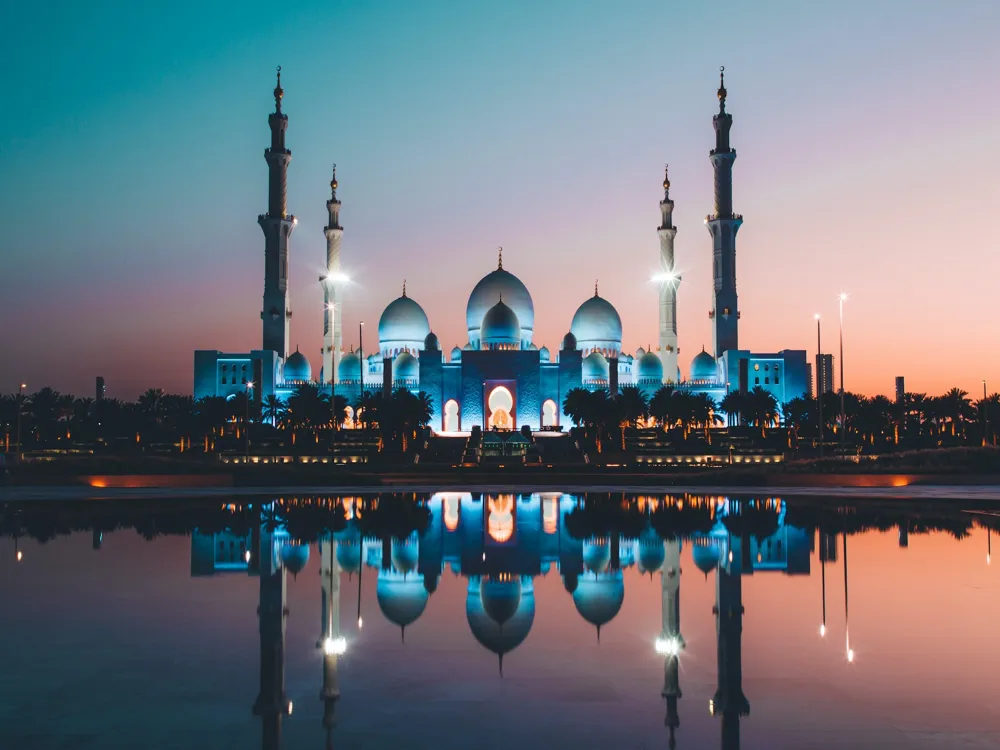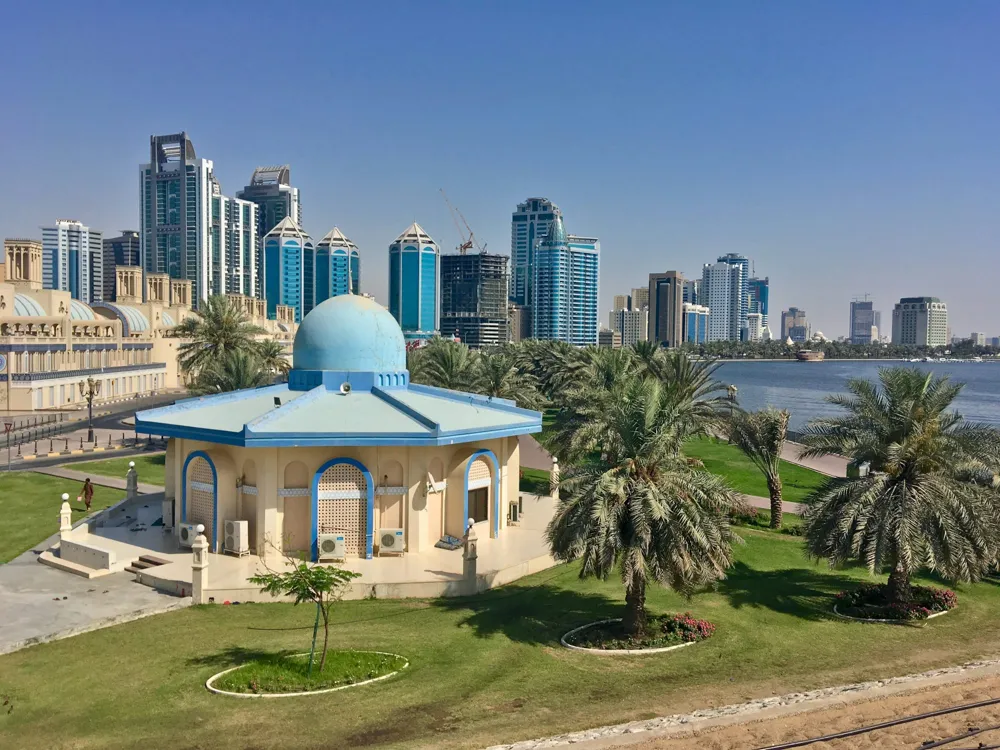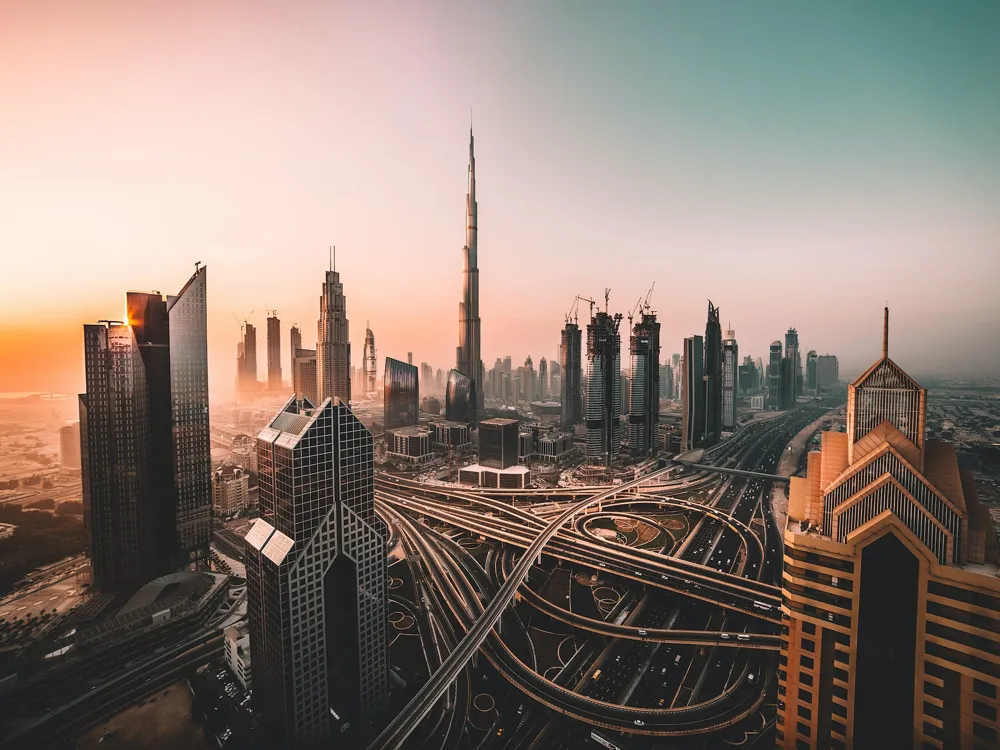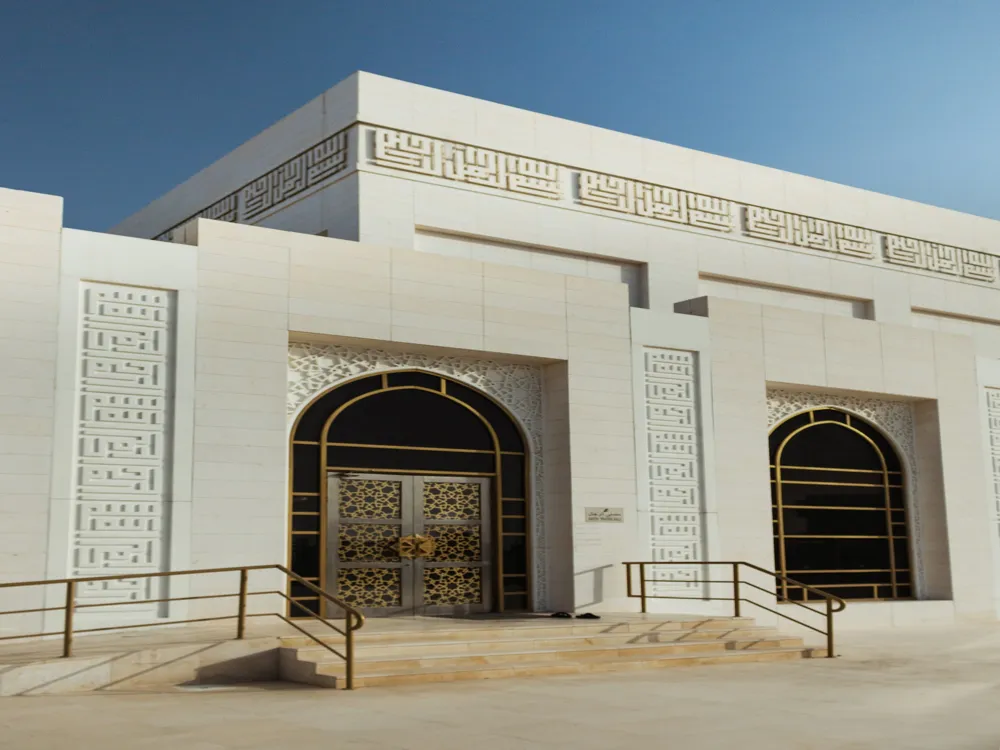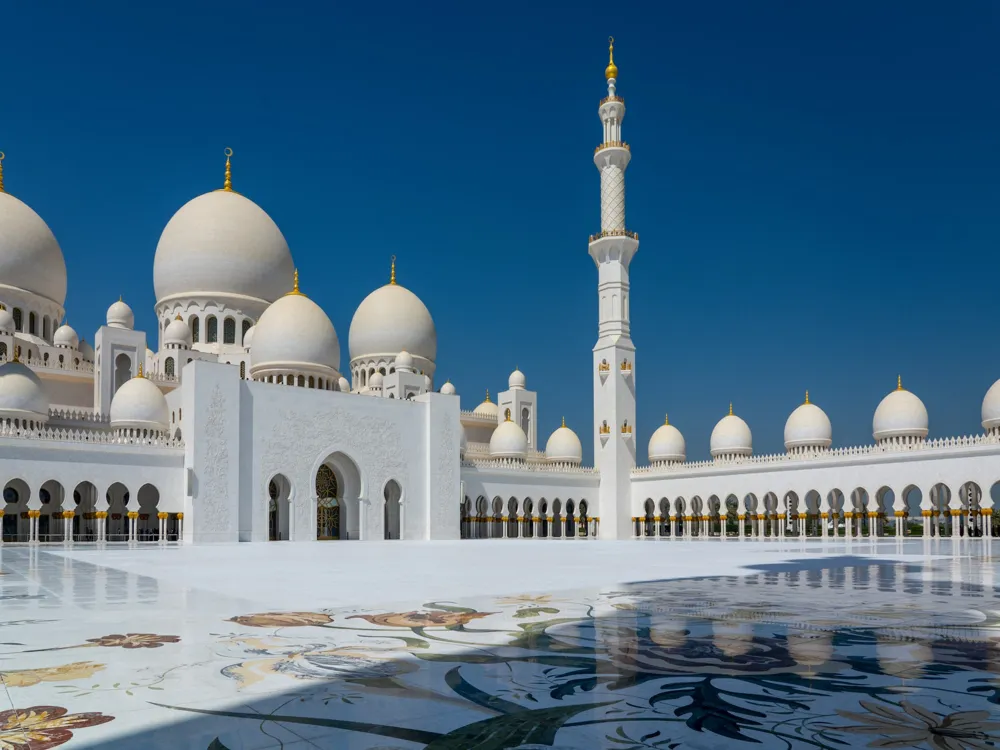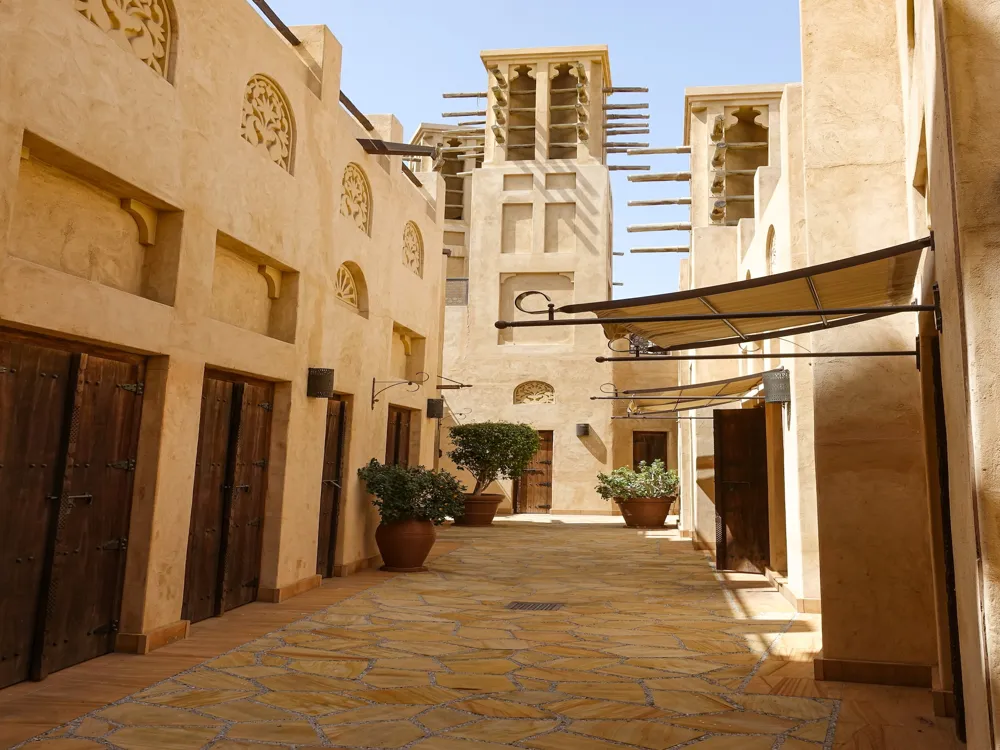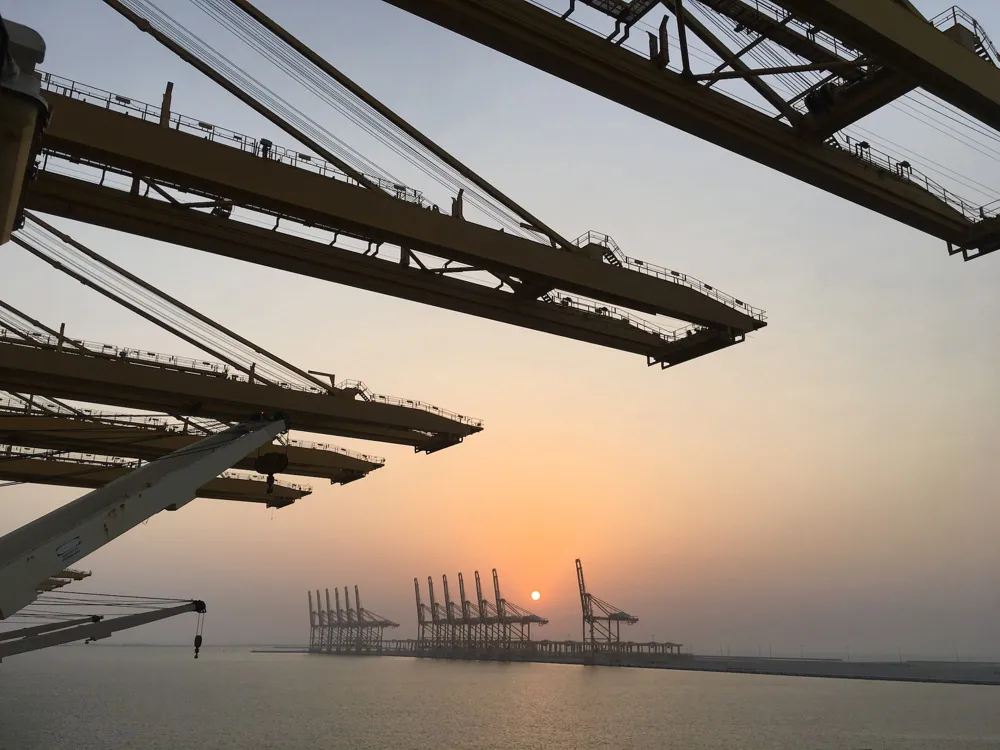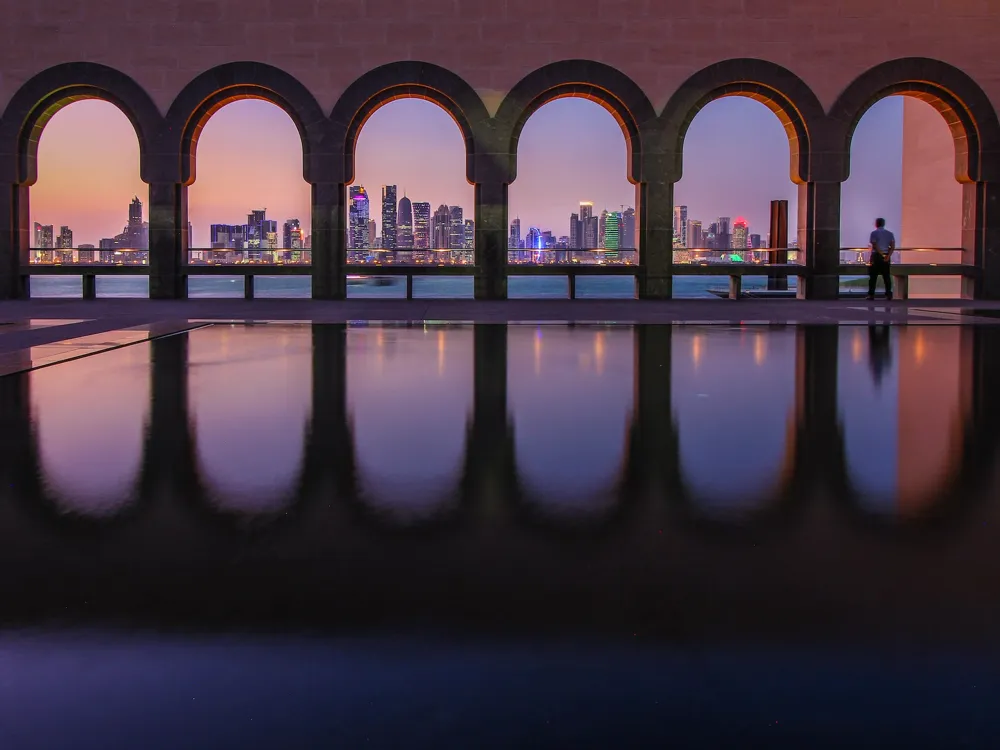Abu Dhabi, the capital city of the United Arab Emirates, is a vibrant blend of traditional Arabian heritage and modern innovation. Situated on an island in the Persian Gulf, it has grown into a cosmopolitan metropolis with a diverse population. The city boasts an array of cultural, historical, and luxurious attractions, making it a popular destination for travellers worldwide. From the serene Corniche beachfront to the majestic Sheikh Zayed Grand Mosque, Abu Dhabi is a city of contrasts, where the past meets the future dynamically and harmoniously. Abu Dhabi's rich history is rooted in ancient civilizations and traditional Bedouin culture. The city's cultural tapestry is woven from the threads of Islamic traditions, Bedouin heritage, and influences from the various expatriate communities. This blend is evident in the city's architecture, cuisine, and festivals, offering visitors a unique glimpse into the heart of Arabian culture. The annual Abu Dhabi Festival, among others, showcases the city's commitment to preserving and celebrating its heritage. Since the discovery of oil in the 1950s, Abu Dhabi has undergone a dramatic transformation. It has emerged as a global city with world-class infrastructure, healthcare, and education systems. The city's skyline, dotted with impressive skyscrapers and innovative architectural designs, reflects its rapid development and economic prosperity. The government's vision for the future, as outlined in the Abu Dhabi 2030 plan, focuses on diversification and sustainable development, ensuring the city's continued growth and relevance on the world stage. Abu Dhabi is a haven for tourists, offering a range of activities to suit all interests. The city's luxurious hotels, expansive shopping malls, and gourmet restaurants cater to those seeking a taste of the high life. For adventure enthusiasts, desert safaris and water sports are a must-try. Cultural aficionados will appreciate the city's museums, galleries, and historical sites, which provide insights into the region's rich history and artistic heritage. Abu Dhabi's architecture is a fascinating amalgamation of traditional Arabian designs and cutting-edge modernity. The city's buildings reflect its cultural heritage, environmental considerations, and ambitious futuristic vision. From the opulent Emirates Palace to the innovative Louvre Abu Dhabi, the city's architectural landscape is as diverse as it is impressive. The traditional architecture of Abu Dhabi is characterized by its adaptability to the harsh desert climate. Historical buildings, such as the Al Hosn Palace, showcase the use of natural materials and simple, functional designs. The wind towers, or 'Barjeel', which were used for cooling, are a distinctive feature of these traditional structures. In contrast, contemporary architecture in Abu Dhabi is marked by its bold, futuristic designs and the use of cutting-edge technology. The skyline is dominated by towering skyscrapers, such as the Capital Gate building, which leans more than the Leaning Tower of Pisa. The city's commitment to sustainable design is evident in projects like Masdar City, envisioned as a zero-carbon, zero-waste urban development. Abu Dhabi is home to several iconic structures that have gained international acclaim. The Sheikh Zayed Grand Mosque, with its stunning white marble façade and intricate Islamic art, is a testament to the city's architectural prowess. The Louvre Abu Dhabi, designed by renowned architect Jean Nouvel, features a striking dome that creates a mesmerizing 'rain of light' effect, blending art with architecture in a breathtaking display. The Sheikh Zayed Grand Mosque is not just an architectural marvel but also a symbol of the cultural diversity and religious tolerance of Abu Dhabi. Its design incorporates materials and artisans from around the world, making it a global icon of cooperation and harmony. The Louvre Abu Dhabi, part of the Saadiyat Island Cultural District, is a symbol of the city's commitment to becoming a cultural hub. Its innovative design and extensive collection of art from various civilizations reflect Abu Dhabi's role as a bridge between the East and the West. The ideal time to visit Abu Dhabi is from November to March when the weather is cooler and more pleasant. This period also coincides with several cultural and sporting events, offering visitors a chance to experience the city's vibrant atmosphere. Respect for local customs and traditions is crucial in Abu Dhabi. Visitors should dress modestly, especially when visiting religious sites. Public displays of affection are frowned upon, and it's important to be mindful of cultural sensitivities. Abu Dhabi has a well-developed public transport system, including buses and taxis. Renting a car is also a viable option for exploring the city and its surroundings at your own pace. The city's layout is straightforward, making it easy to navigate. Abu Dhabi is easily accessible from around the world, thanks to its international airport, which serves as a hub for numerous global airlines. The city is also well-connected by road to other parts of the UAE, and there are regular bus services from neighbouring cities like Dubai. For those seeking a more luxurious experience, cruise ships frequently dock at the city's port, offering another way to arrive in style. Read More:Overview of Abu Dhabi
History and Culture
Modern Development
Tourism and Recreation
Architecture of Abu Dhabi
Traditional Architecture
Contemporary Architecture
Iconic Structures
Sheikh Zayed Grand Mosque
Louvre Abu Dhabi
Tips When Visiting Abu Dhabi
Best Time to Visit
Cultural Etiquette
Transportation
How To Reach Abu Dhabi
Hazza Bin Zayed Stadium
Abu Dhabi
₹ 23,000 onwards
View abu-dhabi Packages
Weather :
Tags : Sporting Events & Stadiums
Time Required : Less than 1 hour
Planning a Trip? Ask Your Question
Abu-dhabi Travel Packages
View All Packages For Abu-dhabi
Top Hotel Collections for Abu-dhabi

Private Pool

Luxury Hotels

5-Star Hotels

Pet Friendly
Top Hotels Near Abu-dhabi
Other Top Ranking Places In Abu-dhabi
View All Places To Visit In abu-dhabi
View abu-dhabi Packages
Weather :
Tags : Sporting Events & Stadiums
Time Required : Less than 1 hour
Planning a Trip? Ask Your Question
Abu-dhabi Travel Packages
View All Packages For Abu-dhabi
Top Hotel Collections for Abu-dhabi

Private Pool

Luxury Hotels

5-Star Hotels

Pet Friendly





